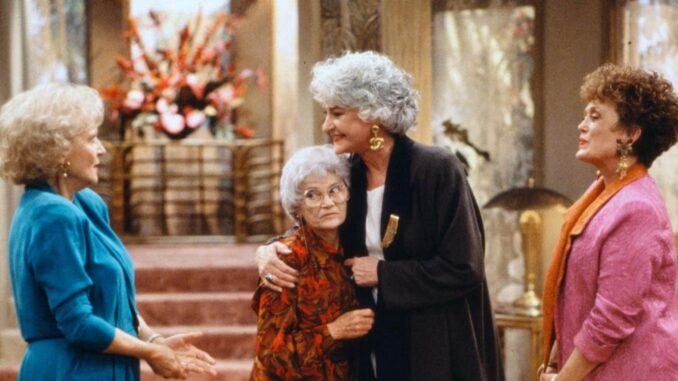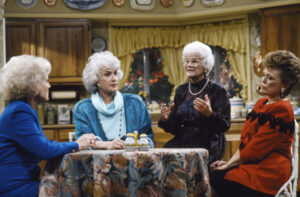
The beloved sitcom “The Golden Girls” has cemented its place in television history as one of the most iconic and enduring shows of all time. But what many may not know is that the “Golden Girls” universe extended far beyond the original series, with a remarkable run that spanned nearly two decades and included three additional spin-off shows.
Premiering in 1985, “The Golden Girls” introduced the world to the sassy, sarcastic, and utterly endearing quartet of elderly women – Dorothy, Rose, Blanche, and Sophia – who captivated audiences with their wit, wisdom, and unwavering friendship. The show’s groundbreaking depiction of the lives and experiences of older women, coupled with its sharp social commentary and unapologetic humor, made it an instant classic.

But the story didn’t end there. In the wake of the original series’ tremendous success, the “Golden Girls” franchise expanded, giving life to a trio of spin-off shows that continued to explore the rich tapestry of these beloved characters and their world.
First came “The Golden Palace” in 1992, which saw the three remaining Golden Girls – Rose, Blanche, and Sophia – opening a hotel and navigating the challenges of entrepreneurship in their golden years. While short-lived, the series managed to maintain the spirit and charm of the original, earning it a devoted following among fans.
Next, in 1993, came “The Golden Girls: Burt & Me,” a made-for-TV movie that reunited the original cast and explored the aftermath of Dorothy’s marriage to her longtime love, Blanche’s brother Sal. The film provided a heartwarming and bittersweet conclusion to the Golden Girls’ journey, solidifying the enduring legacy of the characters and their bonds.
Finally, in 1999, the franchise expanded once more with “The Golden Girls: The Lost Episodes,” a collection of previously unaired scripts that were brought to life through a series of stage productions. This unique offering allowed fans to immerse themselves in the world of the Golden Girls once more, while also shedding light on the creative process behind the original show.

Collectively, the “Golden Girls” franchise spanned nearly two decades, from the original series’ debut in 1985 to the final stage production in 2003. This remarkable longevity is a testament to the timeless appeal of the show’s characters and the universal themes of friendship, aging, and the triumph of the human spirit that it so eloquently explored.
As the years have passed, the “Golden Girls” universe has only grown in stature, captivating new generations of viewers and cementing its place as one of the most beloved and influential sitcoms in television history. The enduring legacy of these sassy, sophisticated, and unapologetically themselves women continues to inspire, entertain, and uplift audiences around the world.
